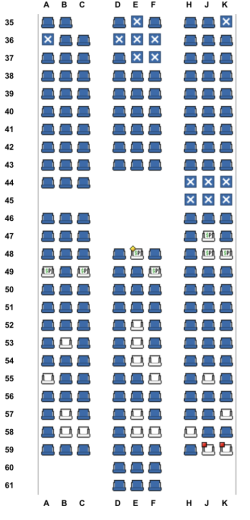justinbrett
Enthusiast
- Joined
- Mar 6, 2006
- Posts
- 11,733
- Qantas
- Platinum 1
- Oneworld
- Emerald
The point was you’re taking an existing service and moving all of the pax to a different vehicle. So that is pretty much the same concept in aviation.Totally OT but the railway use of gauge refers to the distance between the rails. Now sure an up-gauge in that respect refers to a change in the distance between the rails - something not usually compatable with operating equipment. This leads to difficulties specially in Australia where some states use different gauge measurements.. because you know.. states... so in Vic the majority of the track is broad gauge which is wider than standard gauge which is used in NSW (and possibly elsewhere, such as SA?).. this has meant interstate rail links use different tracks and equipment (eg: PTV vic has a subset of locos and carriage stock to run on these lines). This allows for all same-train travel between places like Melbourne and Sydney. Back in the fun days one had to change physical trains at the border(Albury) to continue a journey due to this difference.
So the usage in rail terms is a bit different to the generally accepted aviation usage - though I suppose they are both size related.
(and ironically I am about to catch a broad gauge train on my way out to MEL to catch a flight....)
Carry on....















